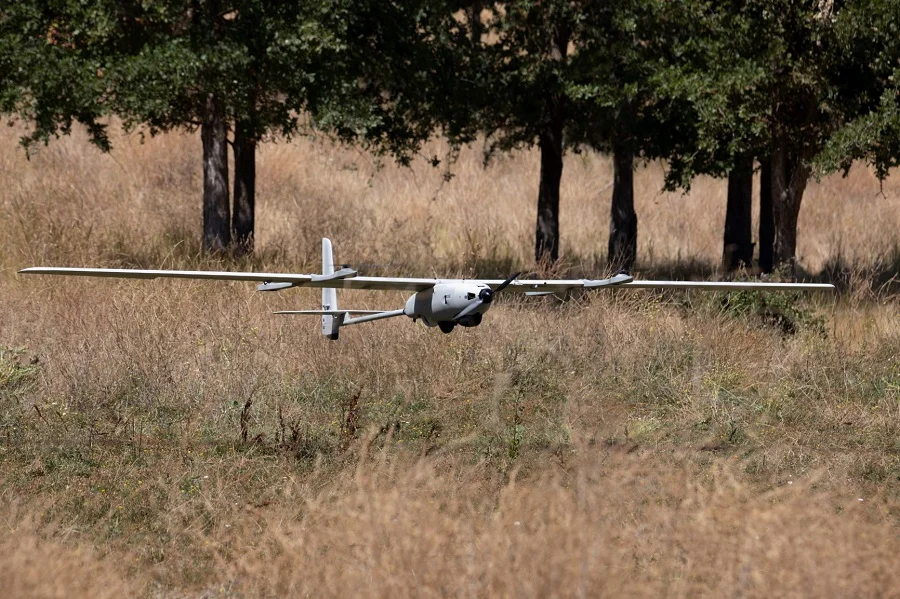Portable mini drones being delivered to the Armed Forces to provide cutting-edge capability have been put through rigorous trials at RNAS Predannack in Cornwall. Under Project TIQUILA, Lockheed Martin’s Stalker VXE30 was subjected to almost 20 hours of trials in challenging weather conditions that pushed the platform to its limits. As a step change in equipment procurement, Project TIQUILA will deliver cutting-edge small Uncrewed Air Systems (sUAS) to UK Forces at pace, whilst also offering spiral capability development opportunities throughout the life of the 10-year project. In keeping pace with both technological and battlespace advances, Project TIQUILA is currently assessing the STALKER VXE30 and Indago 4 with both platforms providing superior ISTAR (Intelligence, Surveillance, Target Acquisition and Reconnaissance) for the User Community.
Of specific note, STALKER VXE30 and Indago 4 will enable the User to find and accurately locate targets at multiple ranges, across a variety of environments and conditions. The recent trial was undertaken by an expert team made up of the Joint UAS Test and Evaluation Flight (JUAS TEF), part of 744 Naval Air Squadron (744 NAS), Air & Space Warfare Centre (ASWC) and Defence Equipment and Support’s TIQUILA Delivery Team. As a key part of capability acceptance, the initial Flight trials provide an essential body of evidence to prove the equipment is capable and that it will provide value for money to both the User and the UK taxpayer. Whilst focussing on the STALKER VXE30 thus far, it is expected that the same sort of rigorous testing will next be conducted on the Indago 4 in due course.

Hannah Haggett, at DE&S said:“The REIVER series, as a vital part of Project TIQUILA, is the latest in a series of important T&E trials as part of the wider TIQUILA enterprise. It is crucial we provide the military with cutting-edge capabilities now but also equipment that can be continually upgraded to keep pace with emerging threats in an ever-evolving, demanding battlespace. Testing early and appropriately will underpin both capabilities and from the evidence generated from the trials thus far, the equipment is high quality and is performing as expected.”
In December 2022, it was announced that more than 250 mini drones would be delivered to the Armed Forces under a contract worth £129 million with Lockheed Martin UK, which supports jobs in Havant and Gloucester as well as across the wider UK supply chain. Weighing a little over 20 kilogrammes and with a 4.88 metre wingspan, the STALKER VXE30 Air Vehicle (Av) is an operationally proven, vertical-launched, near-silent drone providing up to eight hours of imaging capability and able to range out to 60km. Indago 4, a smaller quadcopter type Av, weighing only a little over 4 kilogrammes, can be folded and carried in a backpack and deployed in just three minutes, with a range of up to approximately 12 km. Similar to the STALKER VXE30, the high-resolution camera system on the Indago 4 provides an exceptional zoom capability to accurately identify people, objects, vehicles and weapons, both in day and night conditions. Both sUAS are on track and are expected to be operational by the front line by the end of 2024.















